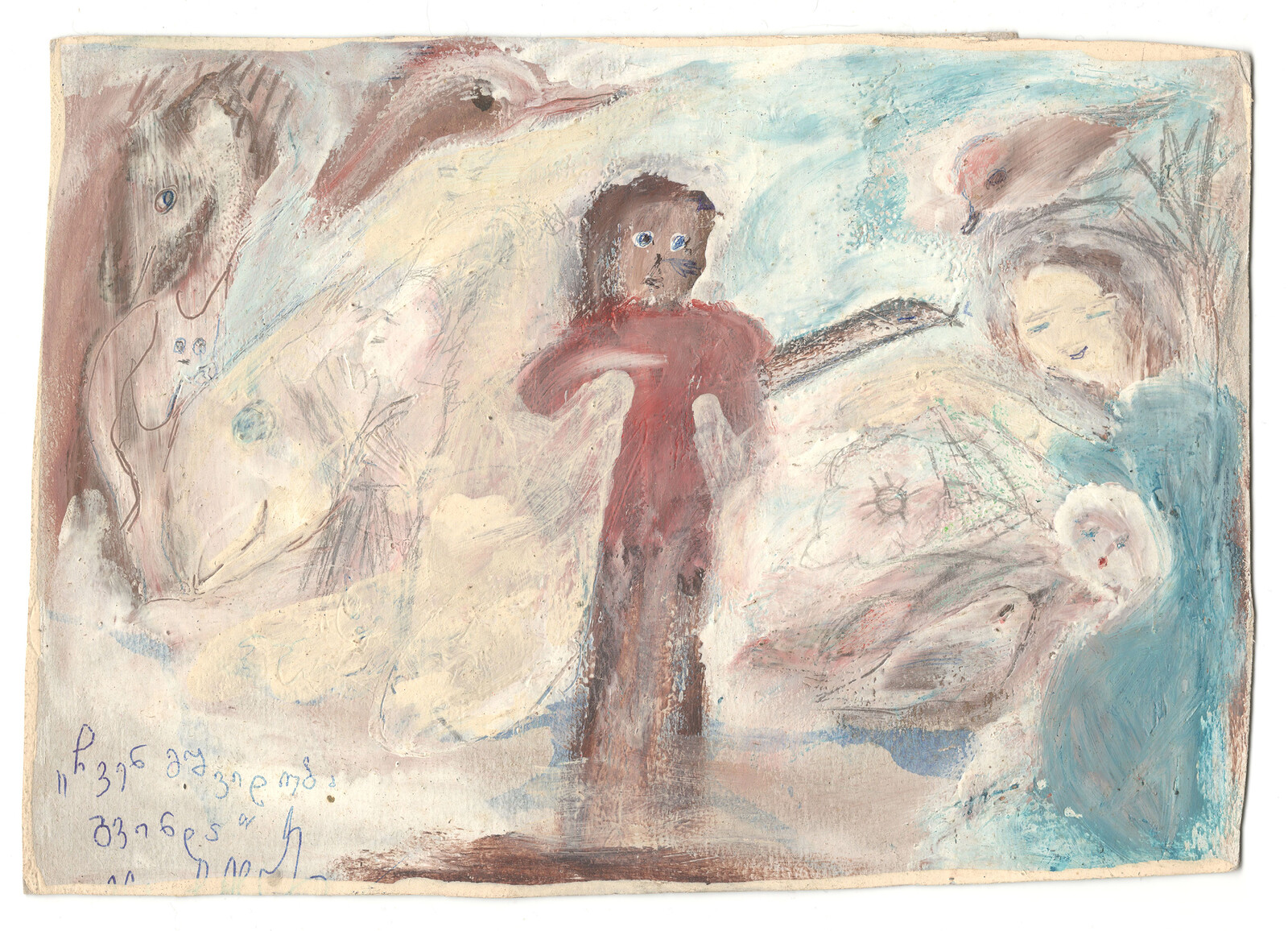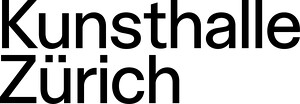As in a Melody or a Bird’s Nest
October 7, 2023–January 21, 2024
Limmatstrasse 270
CH-8005 Zürich
Switzerland
Kunsthalle Zürich is pleased to host the first institutional solo exhibition by Georgian artist Elene Chantladze.
Chantladze employs the term “free drawing” to title many of her works, at times painted into the picture, defining her manner of painting. Writing is not infrequently a pictorial element; the artist worked as a poet and author for a significant period prior to painting. Signature, date or an image description appear in the pictures sometimes as prominently as the figures depicted. Her term of free drawing perfectly characterises her approach to the medium, for every line, every figurative gesture and every compositional decision is generated from the process of painting itself. All of her works are created on and with the materials that she has immediately to hand. As well as coloured pencils, gouache and ballpoint pen, coffee, the juice of pressed fruit or grease also all come into play. The cardboard from a box of chocolates, pages of a calendar or, for example, the back of a cupboard provide image carriers for paintings. Depending on the qualities of the material, Chantladze is either guided directly by the given structure of the surface or, with fast brushstrokes, generates an abstract painterly texture which defines the conception of the image. Thus, she initially creates a suggestive layer without representational intentions, which relies to no small extent on chance and brings creative action itself—without compositional forethought—into focus.
Building on this first stage, Chantladze develops her pictorial programme: she draws associations from the streaks and abstract forms of her relatively haphazardly created ground, conjuring faces, figures, plants and landscapes. In order to fix her visions, she paints over some areas of the image ground, highlights certain shapes, carves thin strokes into the wet paint and develops pen outlines around other silhouettes. A final layer of white along the contours, creating more homogeneous areas between the figures, then often clarifies the pictorial action. What results are concentrated scenes that swing between abstraction and figuration: sometimes individual figures seem to emerge from a diffuse background, sometimes a complete gathering of figures dominates the image and entirely covers the initial layer of painting.
The pictures are composed either of distant, almost isolated characters, or densely populated scenes—sometimes so tight that the figures come together like puzzle pieces, the edges of one figure defining the form of their neighbour. As in icon painting, the figures seem to float auratically and most of the time frontally in a vaguely defined pictorial space tilted theatrically towards the viewer. These spaces only sometimes suggest a landscape or interior: a single table, chair or window draws the scene into a domestic setting; flowers, waves or a cluster of three trees work like stylised props in an otherwise mysterious location placing the action, with a reduced gesture, in a natural context. A hollowed-out rock formation locates another scene in the monastery of Dawid Gareja on the Georgian border with Azerbaijan, while framing structures like the carriage in the image The Man Who Laughs (2019) demonstrate the role of community-defining architectures. Here and there an animal or the suggestion of a face is to be found in the spaces between pictorial elements, where the outlines invite it.
—Excerpt from the exhibition text by curator Otto Bonnen


